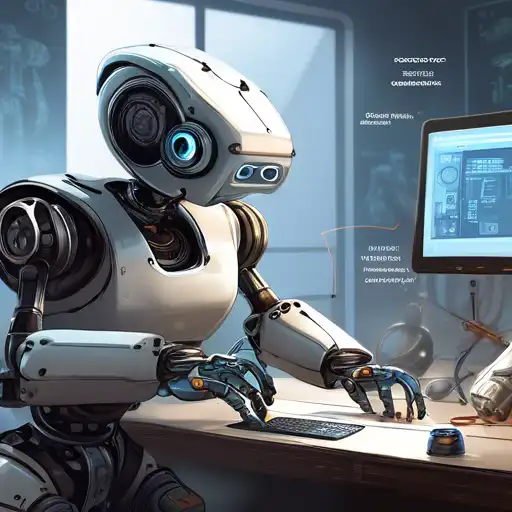Introduction to Robotics Programming
Robotics programming is an exciting field that combines the creativity of design with the precision of coding. Whether you're a hobbyist looking to build your first robot or a professional aiming to automate tasks, understanding the basics of robotics programming is essential. This guide will walk you through the foundational steps to get started in this dynamic field.
Understanding the Basics
Before diving into coding, it's important to grasp the core concepts of robotics. Robotics involves the design, construction, operation, and use of robots. Programming these robots allows them to perform tasks autonomously or semi-autonomously. Key components include sensors, actuators, and a control system, all of which are programmed to work together seamlessly.
Choosing the Right Programming Language
Several programming languages are popular in robotics, each with its own strengths. Python is renowned for its simplicity and readability, making it a great choice for beginners. C++ offers more control over hardware, which is crucial for performance-intensive applications. Other languages like Java and ROS (Robot Operating System) are also widely used in the robotics community.
Setting Up Your Development Environment
To start programming robots, you'll need a suitable development environment. This includes a text editor or IDE (Integrated Development Environment), the necessary compilers or interpreters for your chosen language, and any robotics-specific libraries or frameworks. For beginners, starting with a simulator like Gazebo or V-REP can be a cost-effective way to learn without the need for physical hardware.
Building Your First Robot
Once you're comfortable with the basics, it's time to build your first robot. Start with a simple project, such as a line-following robot or a basic arm. These projects will help you understand how to integrate sensors and actuators with your code. Remember, the goal is to learn, so don't be afraid to make mistakes and iterate on your designs.
Exploring Advanced Concepts
After mastering the basics, you can explore more advanced topics in robotics programming. This includes machine learning for autonomous decision-making, computer vision for object recognition, and swarm robotics for coordinated behavior among multiple robots. Each of these areas offers endless possibilities for innovation and application.
Resources for Continued Learning
The field of robotics programming is vast and constantly evolving. To stay updated, consider joining online communities, attending workshops, and following relevant blogs and publications. Websites like Robotics.org and ROS.org are great places to start.
Conclusion
Robotics programming is a rewarding field that blends technical skills with creative problem-solving. By starting with the basics, choosing the right tools, and continuously learning, you can unlock the potential to create innovative robotic solutions. Remember, every expert was once a beginner, so take your first step today and embark on your robotics programming journey.
